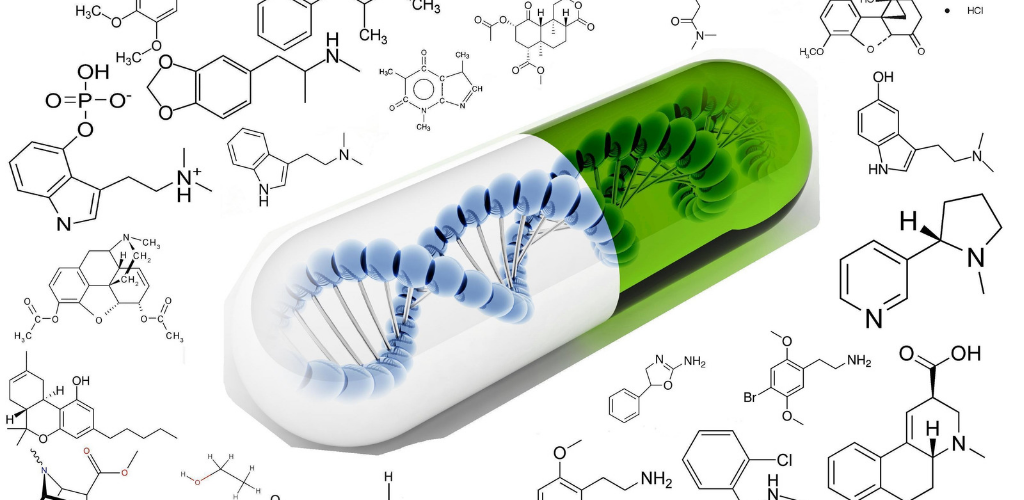Introduction
The development of new therapies for diseases is a challenging and costly process that requires extensive research, testing, and approval. Many potential drugs fail to reach the market due to lack of efficacy, safety, or profitability. Therefore, there is a need for innovative and efficient methods to accelerate and improve the drug discovery and development process.
One of the promising approaches is to use computational methods to leverage the vast amount of data and knowledge available in various domains, such as genomics, proteomics, metabolomics, pharmacology, and clinical trials. Computational methods can help to identify novel targets, design effective molecules, predict drug properties, optimise drug formulations, and evaluate drug outcomes. Computational methods can also help to overcome some of the current and future obstacles in developing new therapies, such as drug resistance, rare diseases, personalised medicine, and pandemic outbreaks.
In this blog, we will review some of the computational methods that are widely used in drug discovery and development, and discuss how they can address the challenges and opportunities in this field. We will also provide some examples of successful applications of computational methods in developing new therapies for various diseases.
Computational methods for drug discovery and development
Computational methods can be broadly classified into two categories: data-driven and knowledge-driven. Data-driven methods use statistical and machine learning techniques to analyze large-scale and heterogeneous data sets, and extract patterns, correlations, and predictions. Knowledge-driven methods use logic and reasoning to integrate and infer knowledge from various sources, such as databases, ontologies, and literature.
Some of the common data-driven methods are:
- Molecular docking and virtual screening: These methods use computational models to simulate the interactions between molecules, such as proteins and ligands, and rank them according to their binding affinity or activity. These methods can help to identify potential drug candidates from large libraries of compounds, and reduce the time and cost of experimental screening.
- Pharmacophore modeling and QSAR: These methods use computational models to represent the structural and chemical features of molecules that are essential for their biological activity. These methods can help to design new molecules with desired properties, and predict their activity and toxicity.
- Network analysis and systems biology: These methods use computational models to represent the complex interactions and dynamics of biological systems, such as genes, proteins, pathways, and diseases. These methods can help to discover new targets, pathways, and mechanisms of action, and understand the effects of drugs on the whole system.
- Artificial intelligence and deep learning: These methods use computational models to learn from data and perform complex tasks, such as classification, regression, clustering, and generation. These methods can help to integrate and analyze multiple types of data, such as genomic, proteomic, phenotypic, and clinical data, and discover new insights, hypotheses, and solutions .
Some of the common knowledge-driven methods are:
- Ontology and semantic web: These methods use computational models to represent and organise the concepts and relationships in a domain, such as biology, medicine, and chemistry. These methods can help to standardise and annotate data, and enable interoperability and reasoning across different sources and formats .
- Natural language processing and text mining: These methods use computational models to process and analyse natural language texts, such as scientific literature, patents, and social media. These methods can help to extract and summarise information, and discover new knowledge and associations .
- Knowledge graphs and graph databases: These methods use computational models to represent and store the entities and relations in a domain, such as drugs, diseases, and genes, as nodes and edges in a graph. These methods can help to query and explore data, and infer new facts and connections .
Challenges and opportunities for computational methods in developing new therapies
Computational methods have shown great potential and success in developing new therapies for various diseases, such as cancer, diabetes, Alzheimer’s, and COVID-19. However, there are also some challenges and limitations that need to be addressed and overcome, such as:
- Data quality and availability: Computational methods rely on the quality and availability of data, which can vary depending on the source, format, and annotation. Data quality and availability can affect the accuracy and reliability of computational models and predictions. Therefore, there is a need for better data curation, integration, and sharing, as well as ethical and legal frameworks for data protection and privacy .
- Model validation and interpretation: Computational methods can generate many results and hypotheses, but they need to be validated and interpreted by experimental and clinical evidence. Model validation and interpretation can be challenging due to the complexity and uncertainty of biological systems, and the gap between computational and experimental methods. Therefore, there is a need for better communication and collaboration between computational and experimental researchers, and the development of explainable and reproducible models .
- Model generalisation and adaptation: Computational methods can be influenced by the assumptions and biases of the data and models, which can limit their generalisation and adaptation to new scenarios and contexts. Model generalisation and adaptation can be important for developing new therapies for emerging and rare diseases, and for personalised and precision medicine. Therefore, there is a need for more robust and flexible models that can learn from diverse and dynamic data, and adapt to different conditions and populations .
Despite these challenges, computational methods also offer many opportunities and advantages for developing new therapies, such as:
- Speed and efficiency: Computational methods can accelerate and optimise the drug discovery and development process, by reducing the time and cost of screening, designing, and testing potential drugs, and by increasing the success rate and profitability of drug candidates .
- Innovation and creativity: Computational methods can enable and enhance the innovation and creativity of drug discovery and development, by generating novel and diverse molecules, targets, and mechanisms, and by discovering new insights and solutions that are not obvious or feasible by human intuition or conventional methods .
- Impact and value: Computational methods can have a significant impact and value on the health and well-being of society, by developing new therapies for unmet medical needs, such as rare and neglected diseases, and by improving the efficacy, safety, and accessibility of existing therapies, such as personalised and precision medicine .
Conclusion
Computational methods are powerful and promising tools for overcoming current and future obstacles in developing new therapies. Computational methods can leverage the vast amount of data and knowledge available in various domains, and help to identify novel targets, design effective molecules, predict drug properties, optimise drug formulations, and evaluate drug outcomes. Computational methods can also help to address some of the challenges and opportunities in this field, such as drug resistance, rare diseases, personalised medicine, and pandemic outbreaks. However, computational methods also face some challenges and limitations, such as data quality and availability, model validation and interpretation, and model generalisation and adaptation. Therefore, there is a need for more research and collaboration to improve and integrate computational methods with experimental and clinical methods, and to develop more innovative and efficient solutions for developing new therapies.
References
(1) Computational Intelligence in Vaccine Design Against COVID-19. https://link.springer.com/chapter/10.1007/978-981-15-8534-0_16.
(2) A review of computational drug repositioning: strategies, approaches, opportunities, challenges, and directions. https://jcheminf.biomedcentral.com/articles/10.1186/s13321-020-00450-7.
(3) Computational Techniques and Tools for Omics Data Analysis: State-of-the-Art, Challenges, and Future Directions- Springer. https://link.springer.com/article/10.1007/s11831-021-09547-0.
(4) Challenges and Opportunities in Statistics and Data Science: Ten Research Areas. https://hdsr.mitpress.mit.edu/pub/da99kl2q.




